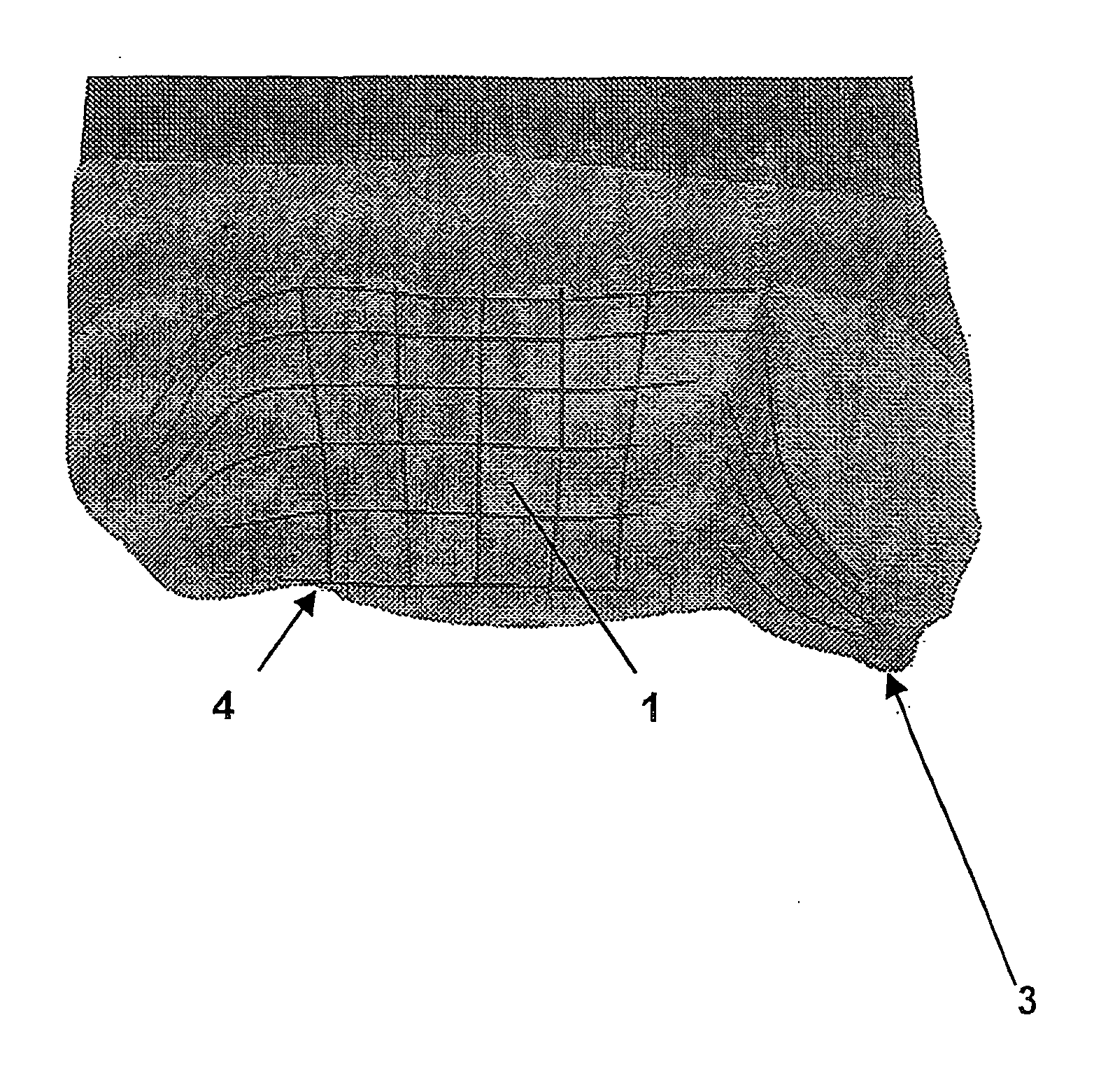Artificial joint
a technology of artificial joints and joints, applied in the field of artificial joints, can solve the problems of not being able to achieve the effect of using the known artificial joint, and the ability to simulate the properties of natural joints only very inadequately, so as to facilitate the design of deviating contact surfaces between the medial and lateral sides, and improve mobility. the effect of mobility
- Summary
- Abstract
- Description
- Claims
- Application Information
AI Technical Summary
Benefits of technology
Problems solved by technology
Method used
Image
Examples
Embodiment Construction
[0028]FIGS. 1 and 2, respectively, show a first main articular surface 1 and a second main articular surface 2 of an artificial joint 3, which is particularly intended for replacement of an ankle joint, the interaction of which is explained in greater detail below with reference to the two figures. The first main articular surface 1 forms a socket 4 due to its largely concave shape and is therefore intended for replacement of the tibia, for example, while a second main articular surface 2 as part of a condyle 5 replacing the talus in particular having a largely convex shape permits mobility with predetermined degrees of freedom. The mobility achieved mainly in this way corresponds to a main function plane of the joint 3. This function plane is perpendicular to the plane of the drawing and corresponds to the sagittal plane. The curvatures 6, 7, 8, 9, 10 of the second main articular surface 2, which are effective here, are labeled in ascending order in the direction from a medial side...
PUM
 Login to View More
Login to View More Abstract
Description
Claims
Application Information
 Login to View More
Login to View More - R&D
- Intellectual Property
- Life Sciences
- Materials
- Tech Scout
- Unparalleled Data Quality
- Higher Quality Content
- 60% Fewer Hallucinations
Browse by: Latest US Patents, China's latest patents, Technical Efficacy Thesaurus, Application Domain, Technology Topic, Popular Technical Reports.
© 2025 PatSnap. All rights reserved.Legal|Privacy policy|Modern Slavery Act Transparency Statement|Sitemap|About US| Contact US: help@patsnap.com



